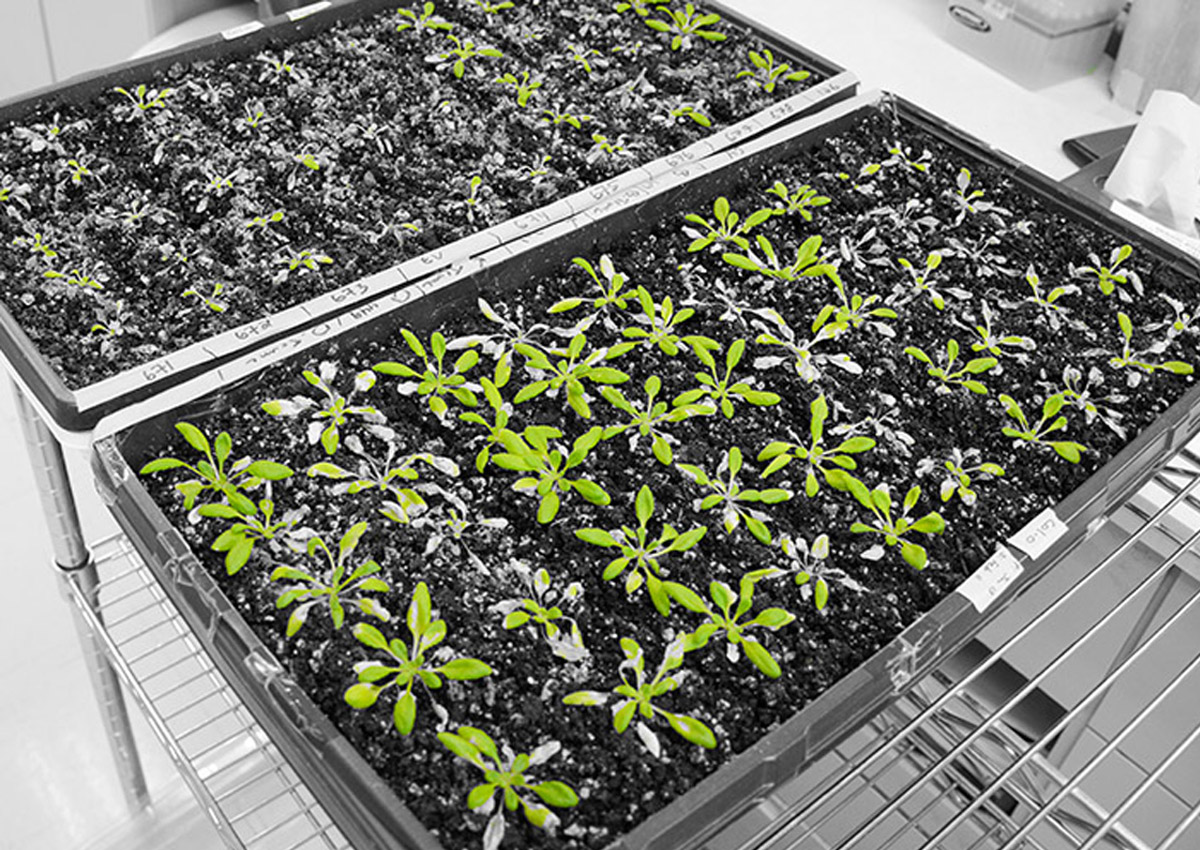
Biologists Develop Defense to Fight Crop Infections
February 26, 2020| |
A research team at the University of Toronto in Canada has successfully tested a new strategy to identify genetic resources in the ongoing battle against plant pathogens such as bacteria, fungi, and viruses, which infect and destroy food crops worldwide. The team led by David Guttman and Darrell Desveaux wanted to know how plants defend themselves against rapidly evolving disease-causing pathogens, why disease is so uncommon even while plants are under continual attack by these highly diverse pathogens, and why domesticated crop species are so much more susceptible to pathogen attacks than wild species.
Guttman and Desveaux addressed these questions by specifically asking how a single plant is able to fight off the attacks of a common, bacterial, crop pathogen. They did this by first characterizing the global diversity of an important class of pathogen proteins, called effectors. The team sequenced the genomes of approximately 500 strains of the bacteria Pseudomonas syringae, which causes disease on nearly every major crop species. The researchers identified approximately 15,000 effectors from 70 distinct families which they reduced by identifying 530 effectors that represent their global diversity. All the representative effectors were then synthesized and put into a harmful strain of P. syringae that causes disease when infecting Arabidopsis thaliana.
"We found that over 11 percent of the effectors elicited immune response and that almost 97 percent of all P. syringae strains carry at least one immune-eliciting effector," said Desveaux. He added that they also identified new plant immune receptors that recognize these effectors and found that almost 95 percent of all P. syringae strains can be blocked by just two A. thaliana immune receptors.
For more details, read the news release from the University of Toronto.
| |
You might also like:
- Scientists 'Vaccinate' Plant to Boost Defense Against Pest
- Plant Defense Genes Provide Clues to Safener Protection in Sorghum
- Researchers Find Genes Conferring Enhanced Defense against Cassava Bacterial Blight
Biotech Updates is a weekly newsletter of ISAAA, a not-for-profit organization. It is distributed for free to over 22,000 subscribers worldwide to inform them about the key developments in biosciences, especially in biotechnology. Your support will help us in our mission to feed the world with knowledge. You can help by donating as little as $10.
-
See more articles:
-
News from Around the World
- FAO Director-General Emphasizes Biodiversity's Role to Food Systems
- Svalbard Global Seed Vault Receives Big Seed Deposit from 35 Genebanks
- Uganda's Ministry of Health Officials Urge Government to Pass Biosafety Law
- Researchers Turn to Exotics to Uncover How Corn Can Adapt Faster to New Climates
- Adapting Photosynthesis to Fleeting Shadows Boosts Soybean Yields
- USDA Targets to Halve US Environmental Footprint, Boost Production 40% by 2050
- Biologists Develop Defense to Fight Crop Infections
- Experts Suggest Consideration of Familiarity for ERA of GM Soybeans in Japan
-
Plant
- CRISPR Helps Determine Sorghum's Ability to Hide from Plant Pest
- Inheritance Patterns of Transgenes in a Series of CRISPR-Cas9 Soybean Lines
-
Read the latest: - Biotech Updates (December 17, 2025)
- Gene Editing Supplement (December 17, 2025)
- Gene Drive Supplement (February 22, 2023)
-
Subscribe to BU: - Share
- Tweet

